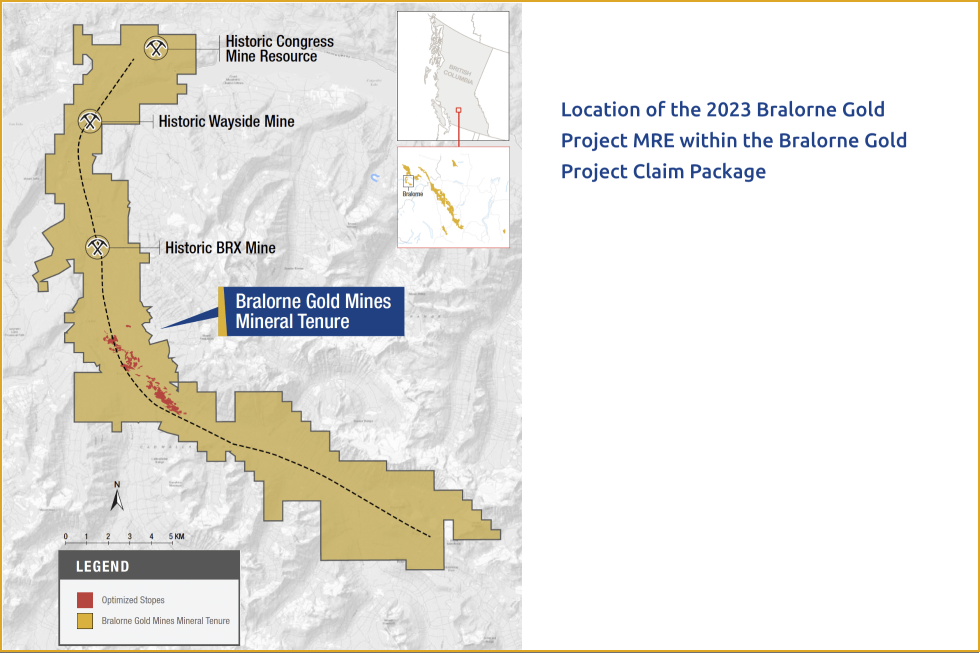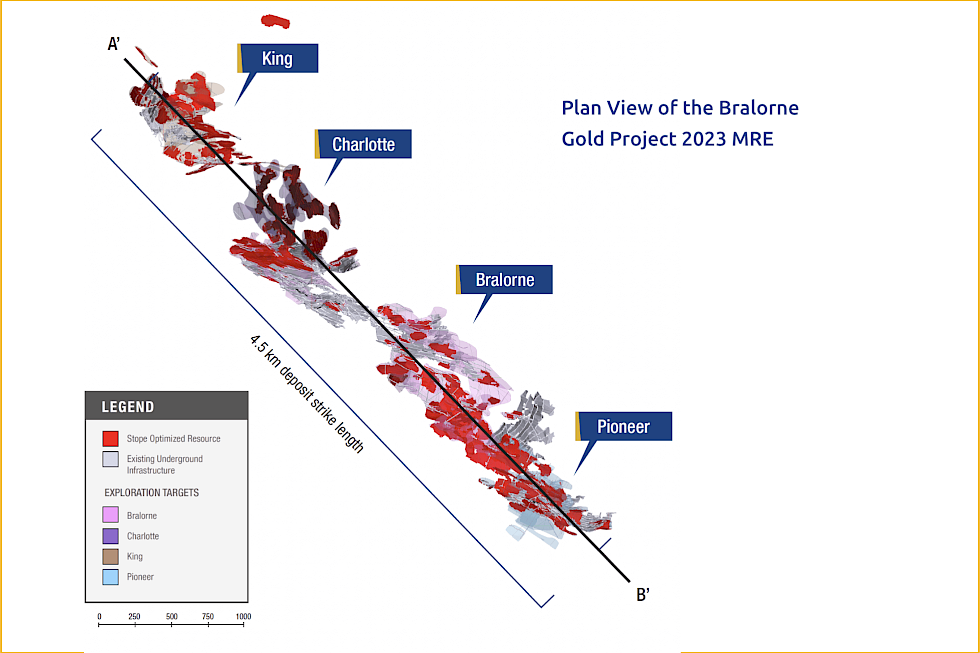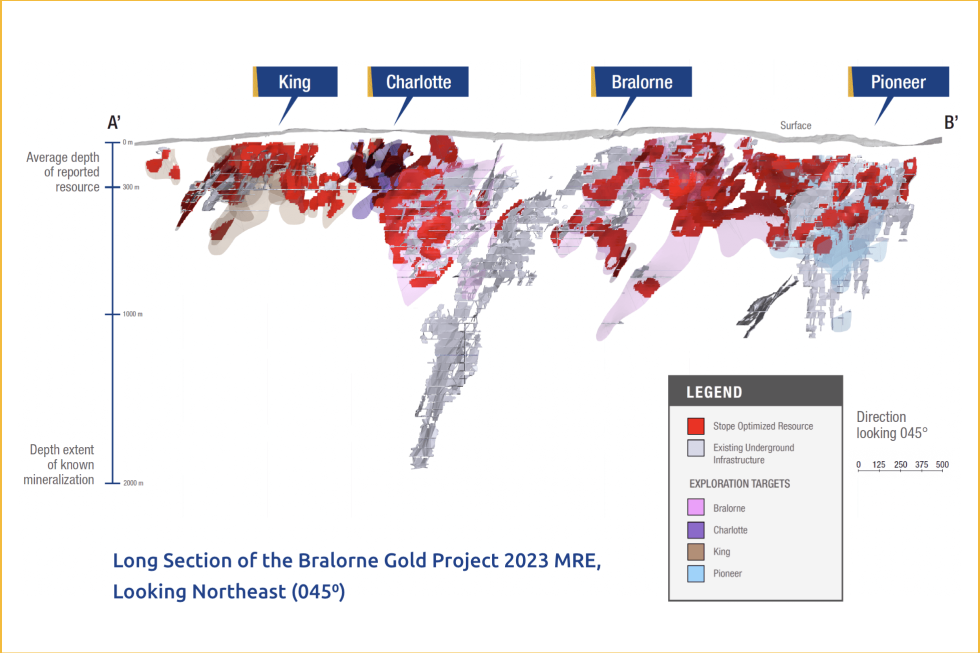150,000 m
Drilling Completed

63 Veins Open Along
Strike and at Depth

Shallow Resource from
Surface to 700 m Depth

96% Average
Metallurgical
Recovery 65% Free Gold

Clear Pathway
to beyond 5 Moz+ Au

47 Historic Gold
Occurrences on 33 km Trend

Consolidated
100% Owned 14,000 ha
Brownfields Camp

Mineralization
Confirmed
to 2 km Depth
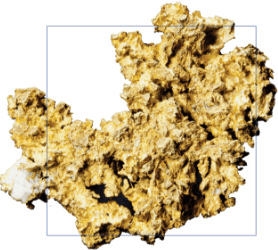
Inaugural Mineral Resource Estimate for the Bralorne Gold Project
-
117,000 tonnes with an average grade of 8.9 g/t Au for 33,000 ounces of gold in the indicated category
-
8.0 million tonnes at 6.3. g/t Au for 1.6 million ounces of gold in the inferred category
-
The resource is approximately defined along a strike length of 4.5 km, to a depth of 700 m and remains open along strike and at depth
-
A total of 86 veins have been identified with 63 veins open along strike and at depth, 18 remain open at depth, and 2 remain open along strike
-
Talisker believes that somewhere between 2.0 and 2.5 million tonnes at grades between 8.0 and 9.0 g/t gold for 600,000 – 700,000 ounces gold may be added to the current resources by drilling exploration targets that are proximal extensions of currently defined mineralized zones, laterally and at depth. This is supported by the drillhole and channel sample data used for the 2023 MRE at drillhole spacings greater than the inferred category resources.
-
Regionally, mineralization has been identified to 2 kilometres below surface, and along a strike length of 33 kilometres.
Bralorne Re-Imagined
Bralorne Gold Project 2023 Mineral Resource Estimate (MRE)
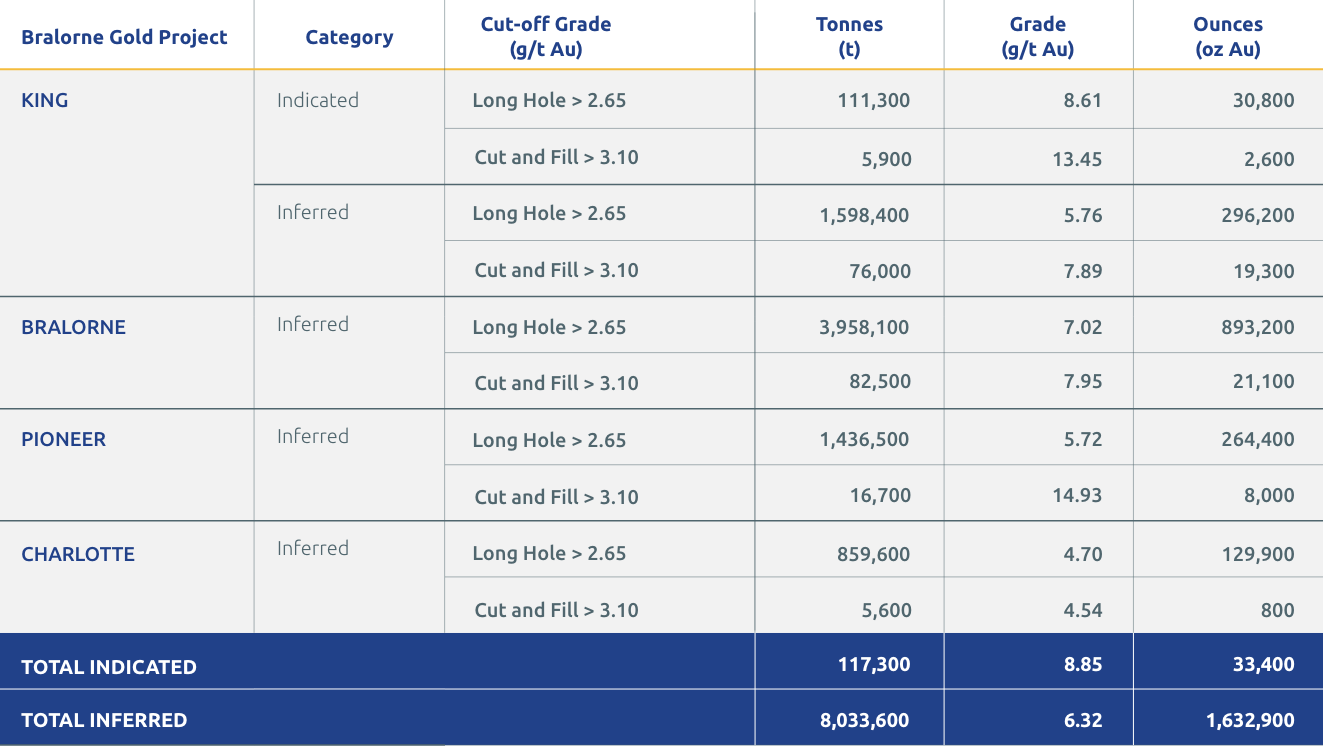
MRE Notes
- The independent and qualified persons, as defined by NI 43-101, are Carl Pelletier, P.Geo., Vincent Nadeau-Benoit, P.Geo., and Eric Lecomte, P.Eng. (InnovExplo). The effective date of the 2023 MRE is January 20, 2023;
- The mineral resources are not mineral reserves as they do not have demonstrated economic viability;
- The MRE follows the 2014 CIM Definition Standards on Mineral Resources and Reserves and the 2019 CIM Estimation of Mineral Resources and Mineral Reserves Best Practice Guidelines;
- A total of 86 veins were modelled for the Bralorne, King, Charlotte, and Pioneer deposits. Quartz vein core wireframes were modelled with a minimum thickness of 0.50 m. A brecciated alteration halo wireframe was modelled around each quartz vein core to produce two nested wireframes with a combined minimum total true thickness of 1.2 m;
- High grade capping, supported by statistical analysis, was applied to composited data inside the high-grade quartz veins for Pioneer (1.4 m) at 100 g/t Au, Bralorne (1.4 m) at 100 g/t Au, Charlotte (1.0 m) at 31 g/t Au and King (1.2 m) at 110 g/t Au for the drill hole samples and at 400 g/t Au for the underground samples and was applied to composited data inside the brecciated alteration halo for Pioneer (1.4 m) at 6.4 g/t Au, Bralorne (1.2 m) at 9.5 g/t Au, Charlotte (1.2 m) at 5.2 g/t Au and King (1.0 m) at 7.5 g/t Au. Compositing was completed using the grade of the adjacent material when assayed, or a value of zero when not assayed;
- The mineral resources for the Bralorne Gold Project deposit were estimated using Datamine StudioTM RM 1.9.36.0 software using hard boundaries on composited assays. The ID2 method was used to interpolate a sub-blocked model (parent block size = 5 m x 5 m x 5 m);
- Indicated mineral resources were defined for blocks inside geological resource solids within 20 m of an underground chip sample (King only). Inferred mineral resources were defined for blocks inside geological resource solids within 50 m of a composite for the King and Charlotte Domains and within 60 m of a composite for the Bralorne and Pioneer Domains;
- Supported by measurements, a density ranging from 2.65 to 2.69 g/cm3 was established for the high-grade quartz vein and from 2.69 to 2.75 g/cm3 for the brecciated alteration halo. Historical underground infrastructures, underground mined volumes and a 5 m buffer around them were given a density value of 0 g/cm3.
- The reasonable prospect for an eventual economic extraction is met by having used reasonable cut-off grades for underground scenarios, a minimum mining width, and constraining volumes (Deswik shapes). The estimate is reported for a potential underground scenario at cut-off grades, depending on the mining method, of 2.65 g/t Au (Long hole stoping mining method) or 3.10 g/t (Cut and Fill mining method) and were calculated using a gold price of US$1,650 per ounce, a US$:CA$ exchange rate of 1.30, a mining cost of C$98.49/t using the long hole stoping mining method or a mining cost of C$127.49/t using the Cut and Fill mining method, transport cost of C$8.00/t, environment and G&A cost of C$24.00/t, rehabilitation cost of C$4.00/t and processing cost of C$32.00/t. The cut-off grades should be re-evaluated considering future prevailing market conditions (metal prices, exchange rate, mining cost, etc.).
- Ounce troy is metric tons multiplied by grade (g/t) and divided by the constant of 31.10348. The number of tonnes and ounces has been rounded to the nearest thousand. Any discrepancy in the totals is due to rounding effects. The rounding followed the recommendations of NI 43-101.
- The qualified persons are not aware of any problem related to the environment, permits, mining titles or related to legal, fiscal, socio-political, commercial issues or any other relevant factor not mentioned in this press release, that could have a significant impact on the 2023 MRE.
The 2023 Bralorne Gold Project MRE incorporates the Bralorne, King, Charlotte, and Pioneer Deposits. The resource is defined approximately over a strike length of 4.5 kilometres within the Bralorne Gold Project’s 33-kilometre-long land package with a maximum width of approximately 750 metres, down to a maximum depth of 700 metres, with an average depth of 300 metres below surface.
The MRE for the Bralorne Gold Project is comprised of modern data collected by Talisker and validated historic data collected by previous operators. A total of 660 diamond drill holes (modern and historic), 13 modern reverse circulation drill holes, 9 modern surface channel samples and 1724 validated historic underground channel samples were used to constrain, model, and calculate the resource bodies. A strong understanding of the controls of mineralization enabled the Company's technical team to construct a MRE constrained by lithology, alteration, structure, and mineralization. The MRE is supported by a robust 3D litho-structural model of the gold-bearing orogenic vein system.

